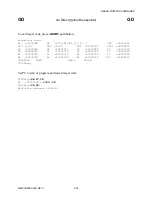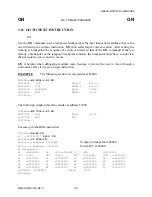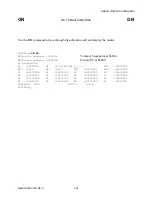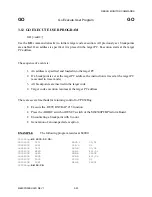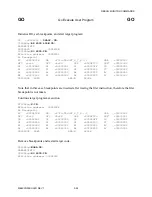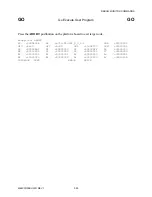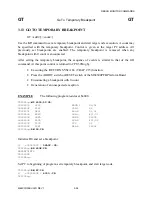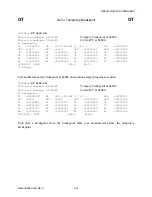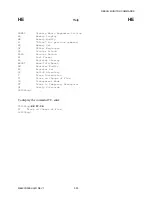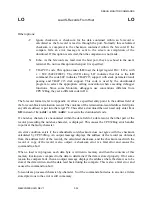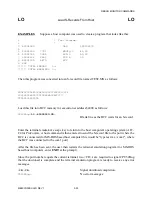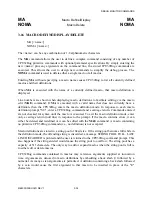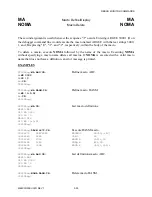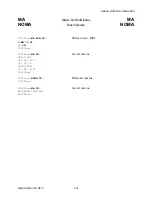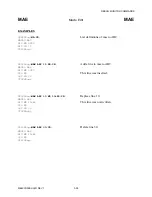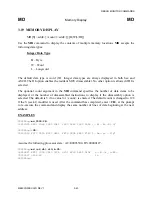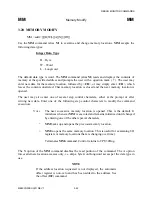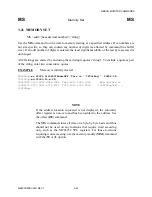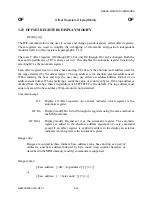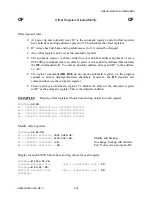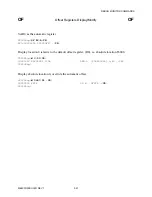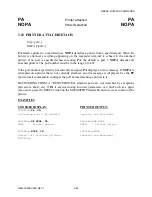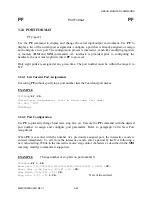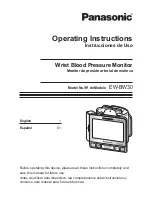
DEBUG MONITOR COMMANDS
M68CPU32BUG/D REV 1
3-34
MA
Macro Define/Display
MA
NOMA
Macro Delete
NOMA
3.16 MACRO DEFINE/DISPLAY/DELETE
MA [<name>]
NOMA [<name>]
The <name> can be any combination of 1-8 alphanumeric characters.
The MA command allows the user to define a complex command consisting of any number of
CPU32Bug primitive commands with optional parameter specifications. By simply entering the
new <name> plus any arguments on the command line, the stored CPU32Bug commands are
executed. This allows the user to design new commands to simplify the debug process. The
NOMA command is used to delete either a single macro or all macros.
Entering MA without specifying a macro name causes CPU32Bug to list all currently defined
macros and their definitions.
When MA is executed with the name of a currently defined macro, that macro definition is
displayed.
Line numbers are shown when displaying macro definitions to facilitate editing via the macro
edit (MAE) command. If MA is executed with a valid name that does not currently have a
definition, then the CPU32Bug enters the macro definition mode. In response to each macro
definition prompt "M=", enter a CPU32Bug command and a carriage return. Commands entered
are not checked for syntax until the macro is executed. To exit the macro definition mode, enter
only a carriage return (null line) in response to the prompt. If the macro contains errors, it can
either be deleted and redefined or it can be edited with the MAE command. A macro containing
no primitive CPU32Bug commands (i.e., no definition) is not accepted.
Macro definitions are stored in a string pool of fixed size. If the string pool becomes full while in
the definition mode, the offending string is discarded, a message STRING POOL FULL, LAST
LINE DISCARDED is printed and the user is returned to the CPU32Bug command prompt. This
also happens if the string entered would cause the string pool to overflow. The string pool has a
capacity of 511 characters. The only way to add or expand macros when the string pool is full is
to either edit or delete macros.
CPU32Bug commands contained in macros may reference arguments supplied at invocation
time. Arguments are denoted in macro definitions by embedding a back slash (\) followed by a
numerial. As many as ten arguments are permitted. A definition containing a back slash followed
by a zero would cause the first argument to that macro to be inserted in place of the "\0"
characters.
Содержание M68CPU32BUG
Страница 16: ...GENERAL INFORMATION M68CPU32BUG D REV 1 1 8 ...
Страница 30: ...DEBUG MONITOR DESCRIPTION M68CPU32BUG D REV 1 2 14 ...
Страница 102: ...DEBUG MONITOR COMMANDS M68CPU32BUG D REV 1 3 72 ...
Страница 168: ...DIAGNOSTIC FIRMWARE GUIDE M68CPU32BUG D REV 1 6 24 ...

